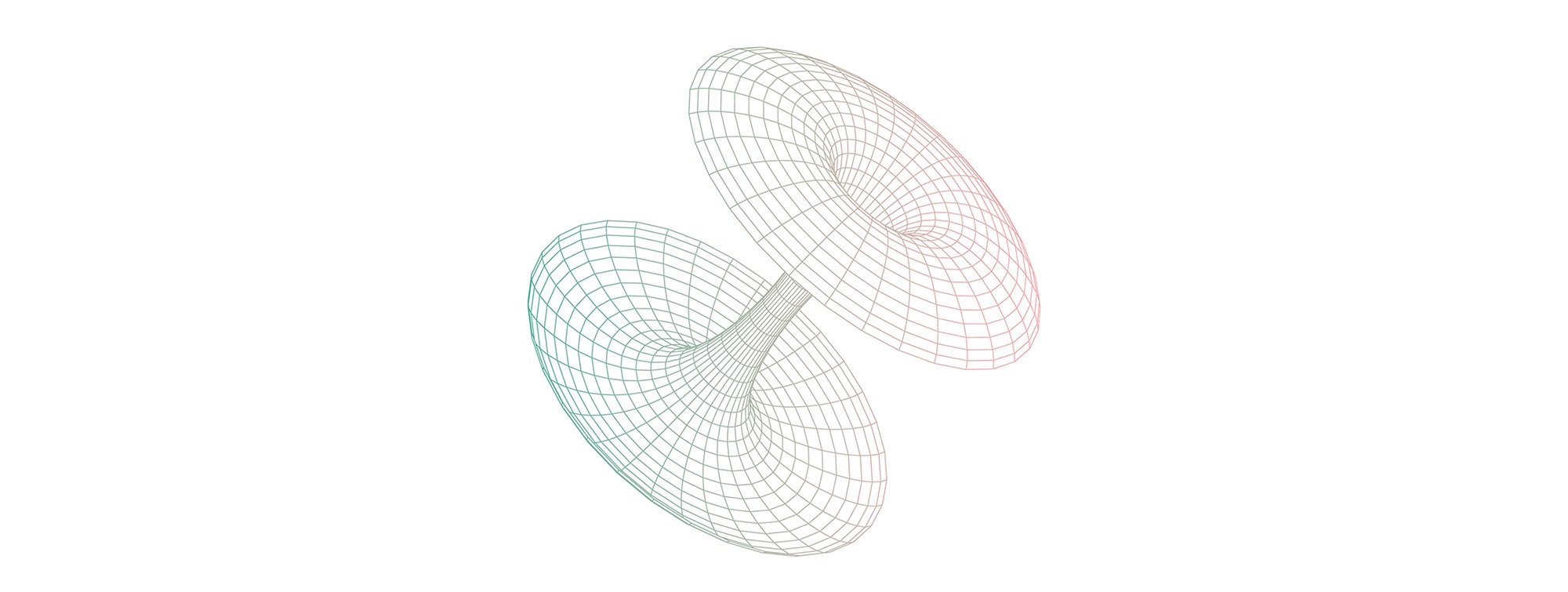1. Cosmology THE BIRTH OF TIME
Astronomers estimate that our Universe is around 13.8 billion years old, based (among other factors) on the observation that the further a galaxy is from Earth, the faster it is receding, in any direction. Unless Earth happens to be smack in the centre of the Universe, this phenomenon is explained by a model derived from Einstein’s theory of relativity. Think of the Universe as a balloon whose various points move apart from each other as it inflates. Astronomers measure the speed of this expansion and reverse it to estimate that our Universe started to “inflate” 13.8 billion years ago: the famous Big Bang when the entire Universe was concentrated into a single point.
What was there before the Big Bang? Probably nothing – not in the sense of an intersidereal void, but in a fundamental sense of the word. The Big Bang corresponds to the sudden appearance of the entire Universe, with both its space and time. There is nothing “around” the Big Bang and nothing “before” it. The Big Bang marks the birth of time.
One hypothetical scenario is that the Big Bang which produced our Universe came from the Big Crunch of a previous universe whose density caused its expansion to reverse and this earlier universe to collapse. Its time disappeared at the moment of the Big Crunch, to be replaced by a new time – that of our Universe. Some theories imagine multiverses like soap bubbles in some giant cosmic foam, exploding, forming and multiplying on a scale beyond our comprehension.

2. Time Dilation THE IMPOSSIBLE LUNCH DATE?
There is no excuse for arriving at a lunch appointment after your guest. Or perhaps there is? Einstein showed that – in principle – it’s impossible for you and your fellow diner to arrive at exactly the same time. His theory of relativity states that time doesn’t flow like a universal clock, the same for all; it depends on our relative movements. We share the same time – and the same perception of simultaneous events – only with people and things which are moving in the same direction and at the same speed as us.
The faster an object is moving (compared with our own speed), the more slowly its time will pass, relative to our frame of reference. It’s a peculiar idea but one that has been confirmed multiple times. Particles formed in Earth’s atmosphere by the impact of a cosmic ray should disintegrate before reaching Earth’s surface, but they get here because they are travelling almost at the speed of light; their time is therefore slower than ours and so they survive for longer.
Gravity, the force that pulls us towards Earth’s centre, produces similar temporal effects. The stronger the gravitational pull, the more slowly time passes. For example, because of a slightly lower gravitational pull, GPS satellite clocks run slightly faster than clocks on Earth. GPS receivers allow for this when calculating a position to within a few metres by trilateration. Even our heads age faster than our feet, but only by half a millionth of a second in a lifetime!

3. Time’s direction THIS WAY, PLEASE
Einstein tells us there is an intrinsic connection between space and time. But there is one glaring difference between the two: whereas we can move backwards and forwards, left and right, up and down, time flows in a single direction: forwards. Obvious? Perhaps, but a sticking point for physics as the fundamental laws of nature, which govern how elementary particles behave, are indifferent to time’s direction. Time could flow in reverse and it wouldn’t change a thing. The theoretical physicist Richard Feynman even demonstrated that the positron – the antiparticle of the electron, used in medical imagery – is the equivalent of an electron moving backwards in time.
Thermodynamics makes sense of time. It connects microscopic phenomena, such as air molecules knocking together, and macroscopic phenomena, such as air temperature or atmospheric pressure. The second law of thermodynamics states that the entropy – the state of disorder – of an isolated system can only increase. A glass can fall and break, but the shards will never spontaneously reassemble and reform the glass.
This law no longer applies when a system has energy available to organise things, such as gravitation creating stars from hydrogen. By taking energy from the sun or from sugars, living matter organises itself into complex beings capable of manufacturing drinking glasses, keeping their homes tidy and writing articles on disorder.

4. Time travel NOW BOARDING FOR THE PAST
It is possible to travel into the future, indirectly at any rate. We can be cryogenised and wake up in a thousand years, or hang out next to a supermassive planet (the plot of Interstellar) so that our personal time passes more slowly than time on Earth. In both cases, however, we are extending our life into a distant future rather than actually travelling through time to the future.
The possibility of travelling into the past would inevitability create insoluble paradoxes. Someone who goes back in time to kill their parents before they meet prevents their own existence and therefore also their journey through time and the murder they committed. By altering the present, would a journey into the past create a parallel universe? Or would a law of “cosmic censorship” prevent any event likely to create such a paradox?
Theoretical physicists such as Kip Thorne have posited time travel through wormholes: a hypothetical structure in spacetime that connects a black hole to a white hole (the opposite of a black hole). Just like a folded sheet of paper lets us jump from one side to the other without going the entire length of the sheet, a wormhole would enable us to jump to a distant point in spacetime, including in the past. While physics currently doesn’t rule out the creation and stabilisation of such an exotic spacetime structure, it remains purely hypothetical, nonetheless.

5. Determinism I WANT TO BREAK FREE
Time is a vital part of causality: a cause must always precede its effect. Scientists use it to predict how a system will evolve, for example the position and speed of the planet Mars on February 7, 2074. In 1825 the mathematician and astronomer Pierre-Simon Laplace published what is said to be the first scientific articulation of determinism: because Nature is governed by physical laws, if we know the exact state of our Universe today we can, in theory, calculate and therefore predict its future state.
This is impossible in practice, primarily because of the highly complex nature of our reality: what’s known as chaotic evolution, exemplified by where the ball lands in a roulette wheel. If we accept that our thoughts are no more than a manifestation of biochemical processes taking place in our brain, then the future is preordained, albeit unpredictable. Each of our reactions, decisions and actions would be an inevitable consequence of the past and we would be like a player piano, capable only of producing the melodies contained in its perforated rolls of paper.
Quantum mechanics, a theory developed in the early twentieth century, disproves this absolute determinism by revealing an intrinsic element of chance in microscopic phenomena. That an electron does or doesn’t trigger a chemical reaction is partly a probabilistic process. While this chips away at the overwhelming fatality of Laplace’s determinism, it leaves little room for free will, namely the capacity to decide for ourselves and to modulate, through our choices, the determined or random result of the biochemical processes happening in our brain. Seen from this reductionist viewpoint, our free will is merely illusion – the equivalent of the hallucinations produced by artificial intelligences such as ChatGPT.













